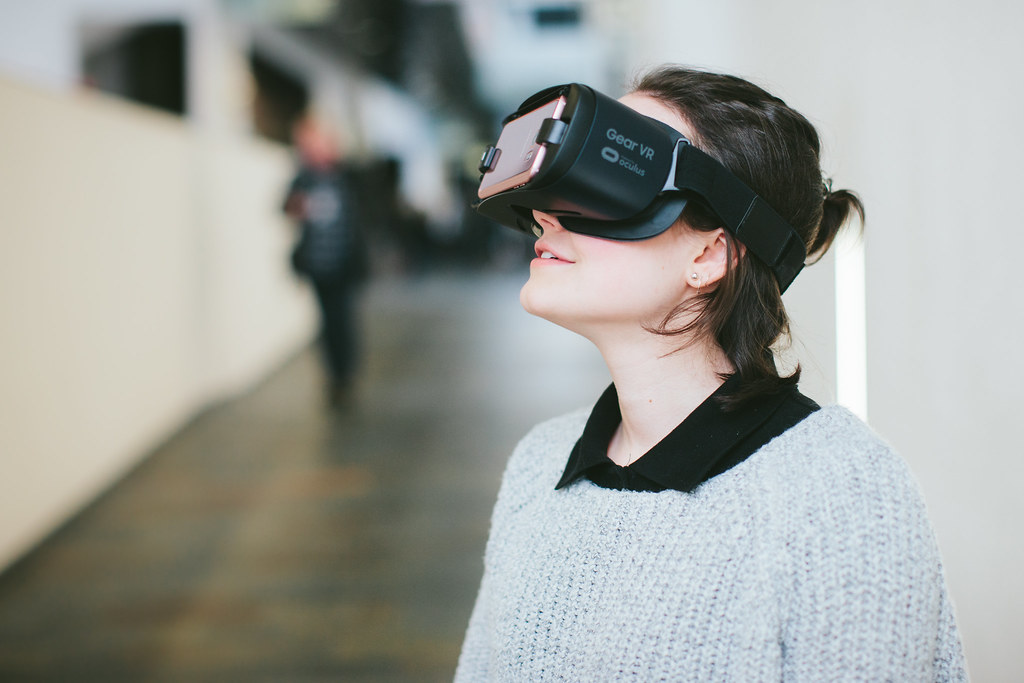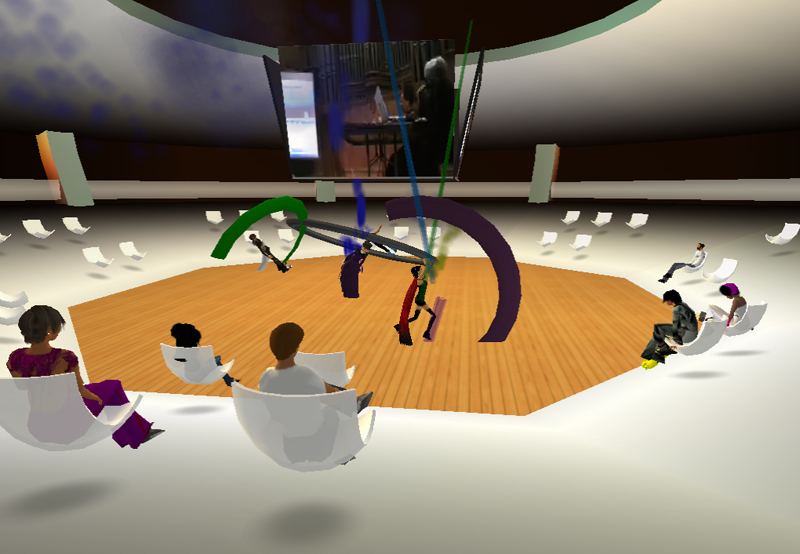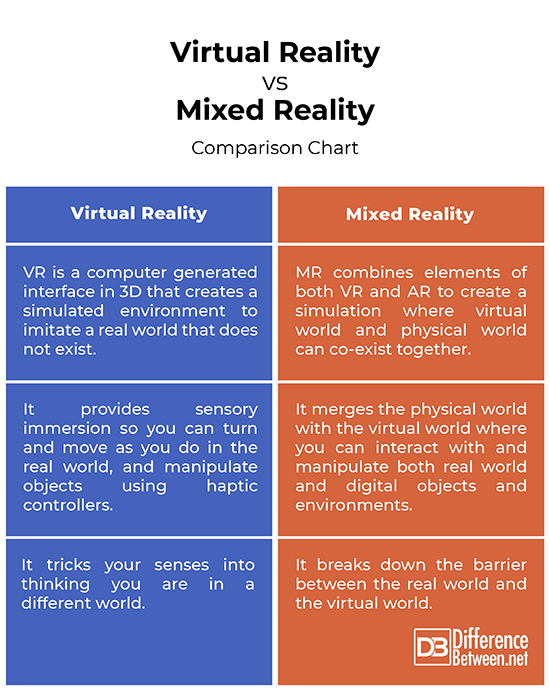Difference Between Virtual Reality and Mixed Reality
Science fiction is no longer fiction any more, at least not in the current time of rapid advances we live in. Ten years back, self driving cars or electric cars would have been a distant dream. We have envisioned a world where the robots could perform all the menial labor tasks humans have had to do in the past, but looking at it now, we are seeing robots in the workplace performing routine manual tasks, even better than humans. Back then, we have seen a future where humans would be able to alter their realities or create their own realities. That future is now our present. Now, while comfortably sitting on a couch at your own home and putting on a headset you can feel like you’re at a soccer stadium thousands of miles away. Now, almost everyone can experience virtual reality (VR) which, a couple of years back could only be found in the imagination of sci-fi writers. But, VR is an umbrella term used to describe other similar technologies, such as mixed reality (MR). Let’s take a look at the two technologies.

What is Virtual Reality?
The idea of virtual reality (VR) alone seems bizarre. What if you could be anywhere you want but without leaving the comforts of your own home? Experience anything? Be anyone you want? This science-fiction thing has been brought to life. VR has pushed forward the evolution of next generation immersive learning experiences. VR is a computer-generated environment created using three-dimensional imaging to imitate a physical environment that does not exist. It is a fully-immersive computer-simulated experience that tricks your senses into thinking you’re in a different world or closed off from the physical world. Using a headset, you can be anywhere you want, be it at the top of a mountain or underwater, and move as you do in the real world. VR takes you to the next phase in computer interfaces where the digital settings respond to create kind of an illusion of being there.

What is Mixed Reality?
Virtual reality is often used as a catchall term for all kinds of immersive experiences, including many related terms, such as augmented reality and mixed reality. So, what is mixed reality? And how is it any different than virtual reality? Mixed reality (MR) offers the best of both the worlds by merging the physical world with the virtual world to create new environments where you can interact with objects from both the worlds. MR is one of the most recent developments around extended reality that takes augmented reality to a whole new level where you’ll be able to manipulate the digital images that are overlaid onto the real world. It may take a fully digital world and connect it to real-world objects. Digital objects appear as if they existed in the real world, and you can even interact with a few digital objects as if they were actually there. Thus, MR is sometimes referred to as “Hybrid reality”.
Difference between Virtual Reality and Mixed Reality
Meaning
– Virtual reality is a computer generated interface in 3D that creates a simulated environment to imitate a real world that does not exist. VR takes you to the next phase in computer interfaces where the digital settings respond to create kind of an illusion of being there. Mixed reality takes augmented reality to the next level by merging the physical world with the virtual world where you can interact with and manipulate both real world and digital objects and environments.
Interaction
– Virtual reality creates a completely virtual environment that is generated by a computer that tricks your senses into thinking you’re in a different world or closed off from the physical world. It provides sensory immersion so you can turn and move as you do in the real world using VR headsets, and also manipulate objects using haptic controllers. Mixed reality, on the other hand, is a simulation that combines a digital world with a real world where both of them can co-exist. You can navigate through the real world and a virtual world seamlessly and simultaneously. Objects in the real world can interact with the objects in the virtual world, and vice-versa.
Immersion
– While both VR and MR are compelling technologies that aim to connect virtual world with the humans, they do it very differently. VR completely shuts out the real world to provide a completely virtual immersive experience that is a replica of the real world. It replaces your view from the physical world to a computer generated environment. MR perfectly blends the physical world with the digital world, providing a larger degree of interaction between the users and virtual world objects. It combines elements of both VR and AR to provide a fully immersive experience.
Virtual Reality vs. Mixed Reality: Comparison Chart

Summary
While both VR and MR are great technologies that aim to integrate virtual and real-world objects, they have distinctive characteristics that stand out. VR uses headsets to replace one’s view from the real world to a computer generated simulated world, completely blocking the physical world surroundings. It enables you to have a full immersive experience in the digital worlds and it tricks your senses into seeing what the lenses want your eyes to see. Mixed reality is the next leap forward that combines the elements of both real world and the virtual world to break down the barrier between both the worlds.
- Difference Between Caucus and Primary - June 18, 2024
- Difference Between PPO and POS - May 30, 2024
- Difference Between RFID and NFC - May 28, 2024
Search DifferenceBetween.net :
Leave a Response
References :
[0]Peddie, Jon. Augmented Reality: Where We Will All Live. Berlin, Germany: Springer, 2017. Print
[1]Liu, Dejian, et al. Virtual, Augmented, and Mixed Realities in Education. Berlin, Germany: Springer, 2017. Print
[2]Mealy, Paul. Virtual & Augmented Reality For Dummies. New Jersey, United States: John Wiley & Sons, 2018. Print
[3]Image credit: https://live.staticflickr.com/2003/2114854829_b120c3988b_c.jpg
[4]Image credit: https://live.staticflickr.com/3754/32806882423_e923d6f9db_b.jpg
